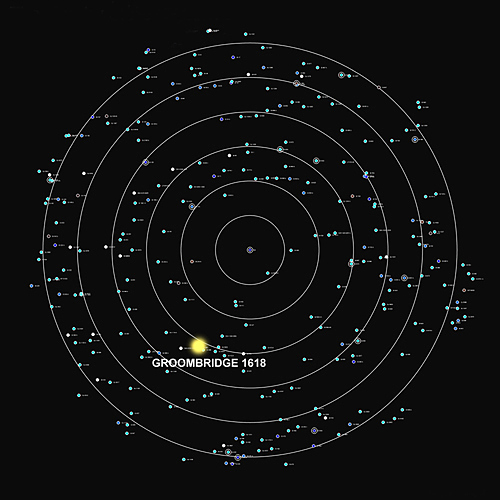
DISTANCE: 15.9 light years from Sol
NEIGHBORING SYSTEMS: Procyon 13.1 lys Chara 14.9 lys Sirius 16.7 lys
GROOMBRIDGE 1618 is an orange-red dwarf which is chromo-spherically active and classified as a flare star. A total of five planets have relatively circular orbits and consist of three rocky worlds and two gas giants. Beyond this is a dense field of silicate dust located at the distant edge of the system. This star also has nearly twice the amount of heavy elements as Sol and the entire region is filled with substantial amounts of Tiberium ore.
UPDATE IN PROGRESS